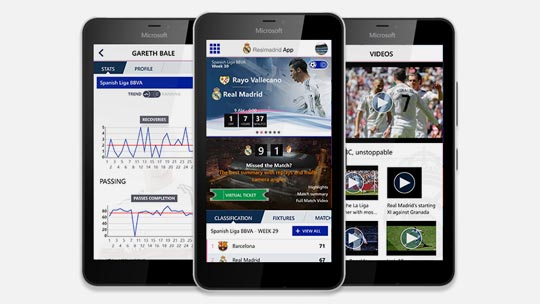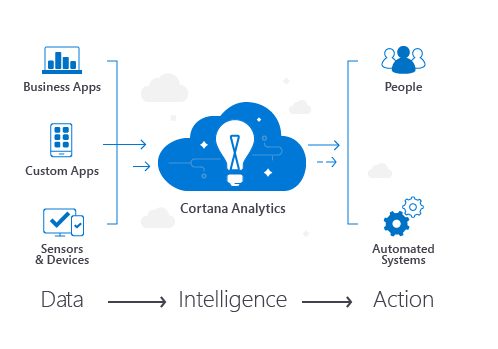This blog post was authored by David Chandra, Director for Public Sector Cloud Services, Asia
 Picture the scene: you are a senior official and your city is becoming more crowded and your citizens are demanding more real time information and better service while your resources are not increasing at the same pace. A natural disaster struck, citizens are starving to get more information and instructions on what to do. You have limited sensors in place to get a real time update on the situation, however your citizens are posting information in their social media. In these times, government could have leveraged the crowd sourced information gathering and at the same time gather formal sensor data to get the most up to date situational awareness on the ground.
Picture the scene: you are a senior official and your city is becoming more crowded and your citizens are demanding more real time information and better service while your resources are not increasing at the same pace. A natural disaster struck, citizens are starving to get more information and instructions on what to do. You have limited sensors in place to get a real time update on the situation, however your citizens are posting information in their social media. In these times, government could have leveraged the crowd sourced information gathering and at the same time gather formal sensor data to get the most up to date situational awareness on the ground.
Can your computer systems cope with the massive increase in workload? Can your staff? And do you have the skills required to make the most of the data?
Over the next decade, these challenges can be overcome. Here is why:
1. Ensuring systems cope with massive amounts of data
In the connected world today, news or an event can drive sudden surges of traffic by the citizen to obtain more information. Especially in times of emergency, interaction between government departments is crucial in being able to deliver timely information and seamless interaction is crucial for modern service delivery.
This need will only increase as governments use more sensors for everything from traffic flow to air quality. The internet of things will see huge pressure on government computer systems to store data, share it and make sense of it.
This is why the concept of hyperscale will become so important from 2016 and beyond. Quite simply, it means that your computer systems will expand their capacity as your need increases. All of sudden, the government agencies will find that there is always enough computing power to solve it.
Cloud computing is the answer behind this. Officials can use computing power on demand – scaling up when an emergency occurs. Microsoft’s Azure system has large data centres spread across Asia that it can make hyperscalability a reality. In an emergency, officials won’t have to worry about their systems, and can focus on analysing the information they have and coordinate their responses.
2. Increasing officials’ ability to handle data
As data collection increases, the need for public sector data skills grows. Governments are responding to this by recruiting and training more data scientists. For example, Singapore has said that data science is “at the heart of” its Smart Nation initiative. Malaysia has plans to train 1,500 public sector data scientists by 2020.
Technology must make this journey easier. Data calculations shouldn’t require a PhD to perform them. Instead, software can provide an easy, user-friendly alternative – augmenting government’s data science teams and allowing all officials to play their part. A frontline official shouldn’t have to wait for a specialist unit to crunch the numbers. Equally, policymakers should be able to use open datasets without requiring special training.
Cortana Analytics has a simple user interface that lets anyone, from policy makers to frontline operations staff, make complex data calculations. It can make sense of a huge array of data sources, from facial recognition to sensor information from the Internet of Things. This can speed up decision making, and ensure that data becomes embedded in all parts of an organisation.
Officials should also be able to draw on the work of other countries’ public servants. Many are facing exactly the same challenges when it comes to managing traffic congestion or energy efficiency. Now, they can share algorithms and calculations with one another on a data marketplace. For example, if civil servants in one part of Indonesia have developed flood-detection algorithms, other local and state governments can use these on their system – rather than develop their own protocols from scratch. They can also use work from researchers at top universities, such as Carnegie Mellon University in the United States.
This becomes even more powerful when combined with machine learning. Cortana can highlight trends and insights, and advise on new actions by trawling through the datasets. It can also interact with users in the natural language and understand their speech patterns. And by learning over time, Cortana can automate tasks – freeing up officials to focus on prioritization.
3. Making better use of government data
Machine learning can play an even greater role in service delivery. It could create personalized citizen services, using datasets to be proactive.
For example, it could create a personalized assistant for each citizen by knowing their past interaction with various government agencies, and their areas of interest or focus. When a mother has a newborn baby, the state could send her useful information and reminders as the child grows up – including birth registration, school starting dates, and state benefit entitlements.
It could create a personalized assistant for each citizen
This is already possible, and is being pioneered by the private sector. Take Real Madrid, the world’s leading sports franchise. They wanted to directly engage with 450 million global supporters.

They used telemetry and data analysis to understand their fans, automating different ways to reach out to fans, according to their needs. The club could understand which bits of a mobile app they interacted with, or even send simple messages to thank the fan for investing time and money when they went to see a live match. This was all hosted on the Azure platform, which allowed data to be held securely, and segmented in a host of different ways.
Governments can do similar, creating seamless personalized services. For example, they could make it easier and more efficient for citizens to pay taxes. Further, different agencies can recognize a citizen according to their previous interactions, ensuring that – whichever branch of government they go to – they are directed to the right place.
The technology is here for government to make the most of its data, and it is innovating at a furious pace. Public servants are in a really great position to take advantage of these technologies, and really transform the way they interact and engage with their citizens.
It doesn’t require an emergency, like a flood. Over the next ten years, even incremental improvements can be made with limited resource.
We need to build on today’s fundamentals to get to the future. All it takes is a realisation of how data can transform public service delivery. Microsoft technology takes care of all of the obstacles.
Microsoft is a sponsor in the year’s World Cities Summit 2016 which takes place on July 10–14 in Singapore. Discover how Microsoft and its partners are accelerating transformation at the conference here.







